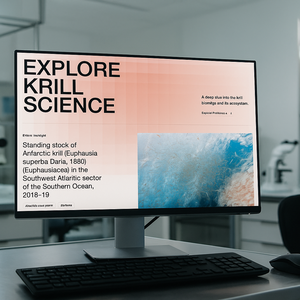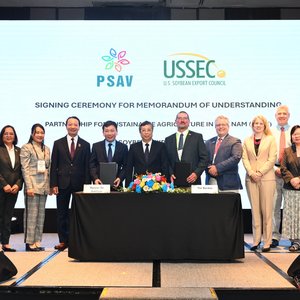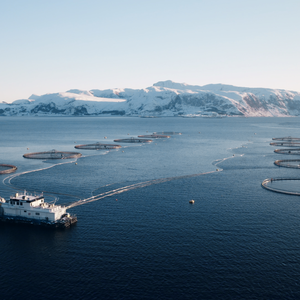EU Commission publishes guidelines on detailed rules for the implementation of Regulation 1831 on Feed Additives
The European Feed Additives and Premixtures Association (FEFANA) has welcomed the publication in the EU Official Journal of the eagerly awaited guidelines for the preparation and assessment of feed additives dossiers. This document is seen as a pivotal tool for the transparency of the assessment process that leads to the authorization of feed additives, including the re-authorization of the existing products.
The Commission published today in the Official Journal the awaited “Regulation on detailed rules for the implementation of Regulation (EC) No 1831/2003 of the European Parliament and of the Council as regards the preparation and the presentation of applications and the assessment and the authorization of feed additives”.
With the publication of this pivotal document – more simply known as “The 1831 Guidelines”- both the operators and the EFSA now have available the tool they needed to pursue the implementation of Regulation 1831, in particular for the re-authorization process of existing feed additives scheduled by November 2010.
The preparation of these guidelines started about 7 years ago, from the earliest stages of the re-casting of the feed additive authorization system into Regulation 1831/2003, which now controls the EU feed additives business. One of the fundamental innovations introduced by Regulation 1831 was that the EU Commission and the Standing Committee of Member States had to define precise rules concerning the content of the application dossiers and the way EFSA will assess them, adapted to each category of feed additives identified in the Regulation. This responsibility of the Commission is a strong requirement of the EU Food Law which organizes the functioning of EFSA.
As foreseen by Regulation 1831, EFSA was regularly consulted during this process for establishing the guidelines. FEFANA also established itself as a major actor, initially by producing a complete operational set of draft guidelines for all categories of additives, which was tabled to the EU authorities in 2003, and also through its continuous involvement in the numerous technical and political discussions that underlined the production of these guidelines.
One of the important difficulties to overcome, which probably explains the long time necessary for the Commission to finalize the process, was the need for the guidelines to practically establish a clear separation between risk management and risk assessment responsibilities, and also to introduce the high level of transparency required by Regulation 1831.
Through this document, the Risk Manager (Commission and Standing Committee) has defined the content and way any application will be judged. Though it should have happened in other areas of the food chain legislation, the feed additive area is seemingly the first one to have gone through the somewhat difficult exercise to implement this basic Food Law principle.
The resulting document is probably the most transparent tool feed business operators have had for the authorization process, putting the applicant and the assessor on an equal footing.
One of the core elements of the guidelines just published is a series of annexes. The most innovative of these is Annex III, which defines for each category of additives the nature and extent of the information necessary in the application dossier. This is essentially binding to both the applicant and EFSA.
This Annex satisfies a strong request made by FEFANA for more transparency in the assessment process. It also provides important elements regarding extrapolations from existing authorizations, e.g. as food additives, or the information that is necessary for the re-authorization of the existing feed additives.
“As can be expected with such a wide-ranging document, we believe that practical experience with dossiers will show the need for refinements, most likely in the way proposed by FEFANA in the first place, but it is a very valid basis for industry and authorities to progress on the implementation of the Regulation 1831, and one can only congratulate the Commission on the work done”, said Didier Jans, FEFANA Secretary General.
While the document was eagerly awaited by the business operators since it was approved by the Standing Committee in December 2007, FEFANA did not wait for its publication for pursuing its work. A complete set of guidance, giving detailed and practical interpretation to the requirements of these guidelines in order to prepare application dossiers, was developed and made available to the FEFANA members and all the companies active in the consortia that the association established.
The burden of work and cost for re-authorizing of all existing additives is very significant for the companies placing these feed additives on the EU market. However, with these two tools - the formal 1831 Guidelines and the Guidance developed by FEFANA - operators now have solid grounds upon which to build the application dossiers in a pragmatic and consistent way.
For the past few months, FEFANA is actively supporting companies seeking to keep their existing feed additives on the market, and one is now seeing concrete results of these efforts.
Since the authorization of feed additives according to the new Regulation shall be much more precise than what it was in the past, including specifications, purity, and manufacturing process elements, the diversity of possible sources of a given additive is at stake. The challenge is not only to table dossiers for as many additives as possible, but to include in the dossiers the necessary elements for covering the diversity of sources. It cannot be expected that a single company will take care of securing the market access of its competitors.
In order to coordinate and support company efforts, seven consortia have been established so far by FEFANA, focusing on flavorings, carotenoids, vitamins, amino acids, silage additives, acids and their salts (covering both preservative and silage function) and Trace elements (both organic and inorganic forms). Two further initiatives on binders/anti-caking and on emulsifiers are in preparation.
Further information is available from the FEFANA web site (www.fefana.org). All of these consortia are open to FEFANA members and non-members.
The companies involved in these consortia are clearly positioning themselves as responsible and reliable partners for the future. The time and resource investment of these companies is significant, but is a must to maintain existing products on the market. De-selection of suppliers that do not actively support their additives is likely to occur progressively in the coming months. One can notice that the premixture and feed operators are expecting very concrete move from their suppliers in this area, and active participation in the established consortia is a strong positive element in this picture.
The timeframe for the re-authorization is fixed and one should not expect it to change, the formal rules for the application and assessment are established, the industry has developed practical tools for preparing dossier, the most important consortia are established or will soon be; so all the elements are available for the process to successfully go on and is now up to the operators’ decision and coordinated efforts to ensure all feed additive dossiers are submitted to the Commission by November 2010.
Download the new guidelines 1831 from the Commission website. (PDF).










